The Undisputed Best Oregano Companion Plants
Oregano is a hearty, aromatic herb that many gardeners and cooks love to grow and use. With its pretty white or pink flowers and distinctive oval leaves, oregano adds nice visual appeal in the garden as well as lots of flavor in Mediterranean style cooking.
Oregano companion plants helps boost yields and growth for neighboring tomato, pepper, eggplant and brassica vegetables along with strawberries and herb friends like rosemary and thyme.
Oregano originally came from the hilly, rugged regions of the Mediterranean and Europe. Now different varieties grow well in herb gardens worldwide.
I have jotted down for you oregano’s complementary companions as well as incompatible pairings to avoid a thriving edible landscape brimming with flavor.
Companion Planting
The practice of companion planting involves thoughtfully selecting and grouping plants in close proximity to enhance growth and productivity of Oregano companion plants as well as Spinach Companion Plants
Historical narratives connect the technique to Native American agricultural societies, such as the renowned “Three Sisters” system, which intercrops maize, climbing beans, and squash in a mutually beneficial arrangement.
Low-growing squash leaves discourage weeds and pests, the beans improve soil fertility by fixing nitrogen into the soil, and the corn stalks provide support for the vining beans. Oregano fosters comparable synergies through its multifarious effects when planted as a companion plant.
Benefits of Oregano Companion Planting
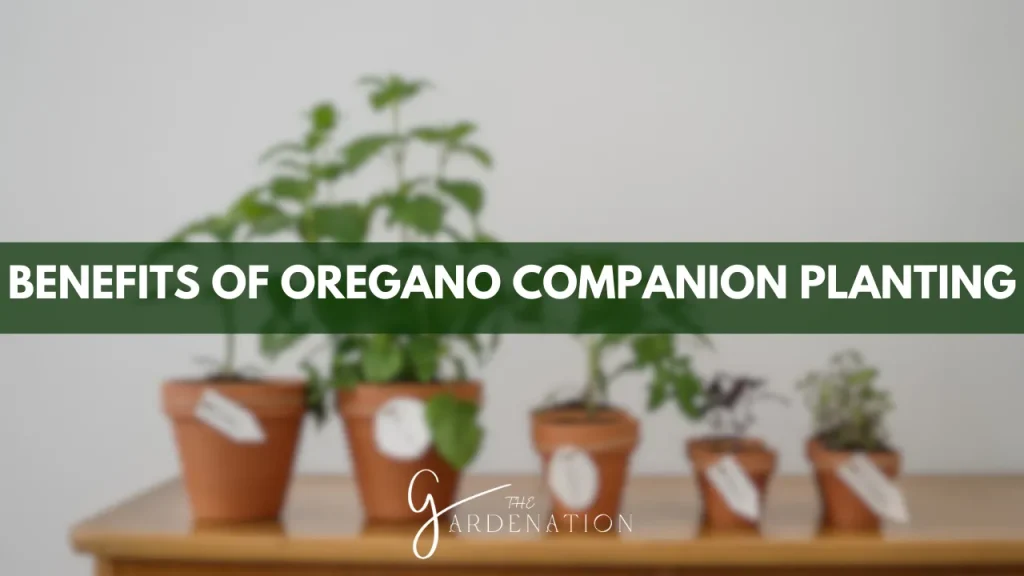
Several characteristics make oregano a helpful garden ally for its neighbors:
- Natural Pest Deterrent – Oregano leaves and flowers contain the compound carvacrol with insecticidal effects disrupting harmful pests. Deterring aphids, cabbage loopers, whiteflies, beetles and more protects neighboring plants.
- Attracts Pollinators – Showy oregano blossoms draw beneficial pollinating bees, butterflies and other insects into the garden improving fruit set and yields for surrounding plants that rely on these winged garden helpers.
- Beneficial Predators- Not only does oregano deter some detrimental garden pests, it also invites beneficial predatory insects like ladybugs by supplying supplemental nectar via its flowers. These helpers regulate pest populations.
- Flavor Enhancement – Reports indicate certain veggies and fruits even benefit flavor-wise when oregano is grown nearby, though concrete mechanisms remain unproven. Tomato taste in particular rises with proximity to oregano.
If you want to know more about gardening you can visit: 15 Weeds That Look Like Wheat
Ideal Oregano Companions
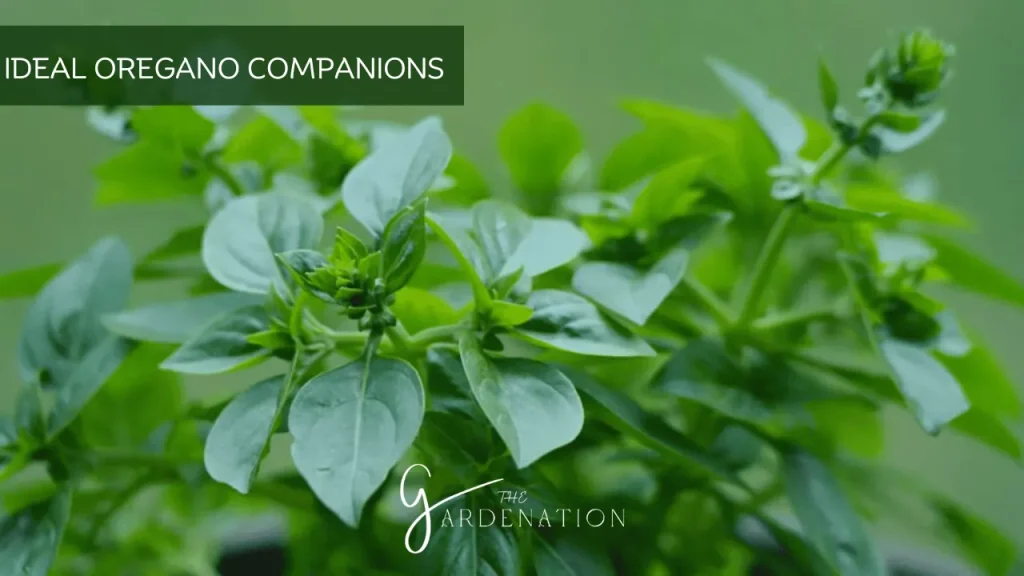
Many edibles flourish alongside oregano as great companion plants:
- Tomatoes- A match made in garden heaven! Tomato health and yields increase with oregano neighbors.
- Peppers & Eggplants – Other heat-loving nightshades appreciate oregano’s company in the vegetable patch, deterring flea beetles together under rows of taller tomatoes nearby.
- Peas & Beans- Bean plants often struggle with fungal issues that oregano companion plants helps prevent, improving production.
- Brassicas- Kale, cabbage, broccoli and similar vegetables grow well with oregano borders, gaining protection from destructive caterpillars.
- Strawberries- I plant oregano around the edges of strawberry patches to boost productivity through enhanced pollinator attraction.
When planting oregano near other edibles, I allow 12-18 inches between plants. Most veggies thrive in compost enriched, moderately fertile garden loam. Drainage proves critical to avoid root rots that oregano abhors. Do checkout!! companion planting of Tomatillo Here: Tomatillo Companion Plants
Growing Oregano with Other Herbs
Culinary oregano blends beautifully with an array of fellow herbs in the garden. Popular combinations include:
- Rosemary – These Mediterranean herbs share needs for sharp drainage and prefer sandy, slightly alkaline soils.
- Sage – Their fine flavors accent one another wonderfully in the kitchen while the plants deter cabbage moths together outside.
- Thyme – Adaptive thyme handles more moisture than oregano but together they enhance essential oil abundance.
- Lavender – The visual appeal and heady scents are outstanding… I just allow enough space between low growing oregano and taller lavender.
- Basil & Parsley- I keep oregano at the sunnier end of a planter box, benefiting these moisture and nutrient loving herbs.
- Mint – I plant mints separately in bottomless containers allowing underground spreading without impeding other herb growth.
Harvesting Herbs Together
The ideal time for gathering fresh oregano from oregano companion plants comes just as flower buds emerge, before they fully open when essential oil concentrations peak. Snip sprigs early in the day after dew has evaporated for best flavor.
While oregano keeps producing throughout summer, I avoid overharvesting by never removing more than one-third of a plant at once. This allows steady regrowth for future harvests too. Perennial oregano returns dependably the following seasons as well!
Worst Oregano Companion Plants
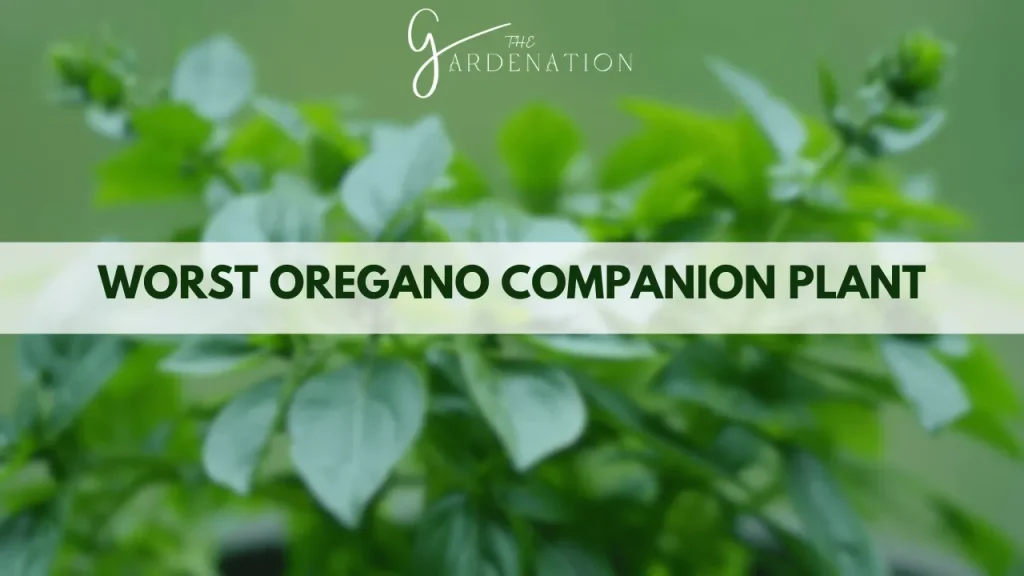
When it comes to compatible matches, not all plants belong alongside culinary oregano.
Choices to avoid include:
- Cucumbers & Melons – These crawling vines easily overtake low-growing oregano plants, competing aggressively for space, nutrients and sunlight.
- Squash & Zucchini– Similarly, sprawling squash species overwhelm delicate herb partners, causing leggy reach and reduced vitality over time through shading and root disturbances.
- Potatoes- Prone to myriad fungal issues, conditions often worsen when interplanted with moisture-sensitive herbs like oregano, spreading blight rapidly.
- Mints – Though they deter certain beetle pests, mint’s aggressive spreading tendencies quickly choke out oregano grown together as the mint monopolizes space below and above ground.
10 Types of Oregano for Your Garden
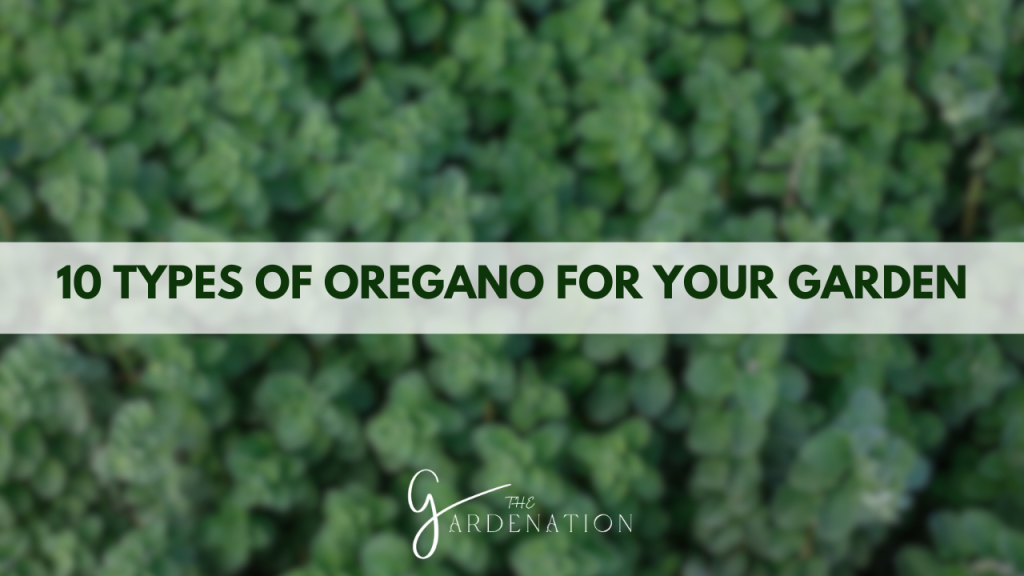
With over 50 known species covering a spectrum of flavors and scents, it helps to understand key oregano varieties. Following are famous 10 types of oregano with some imposters:
1. Common Oregano
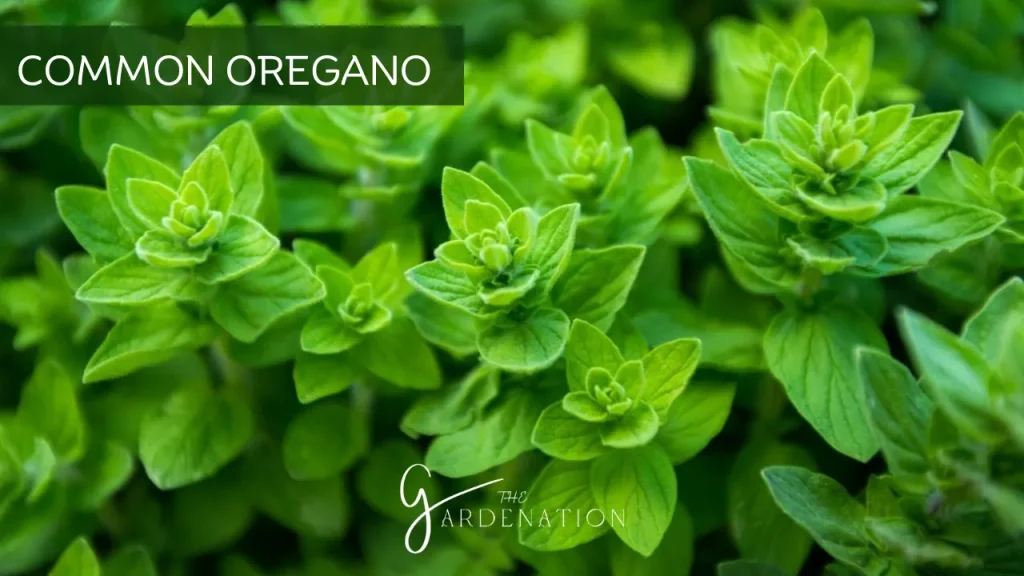
This is the most popular type of oregano companion plants used in cooking. Common oregano offers a nice balance of floral, woodsy and zesty notes. It’s a versatile form used in many Greek, Italian and Mediterranean dishes from pizza to pasta sauces, on meat, vegetables and more.
An essential for every herb garden!
2. Greek Oregano
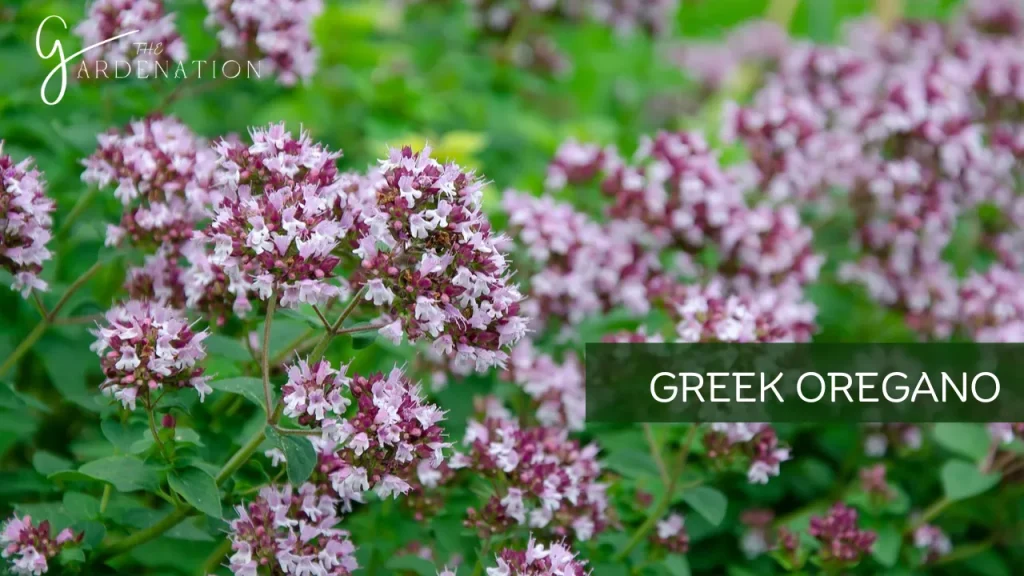
Similar to common oregano but Greek oregano features a more robust, intensely zesty flavor. It has a distinguishing minty undertone. The pungent delight pairs perfectly with classic Greek and Italian cuisine like pizza, pasta, tomato sauce, salad dressings, lamb and eggplant dishes.
3. Marjoram
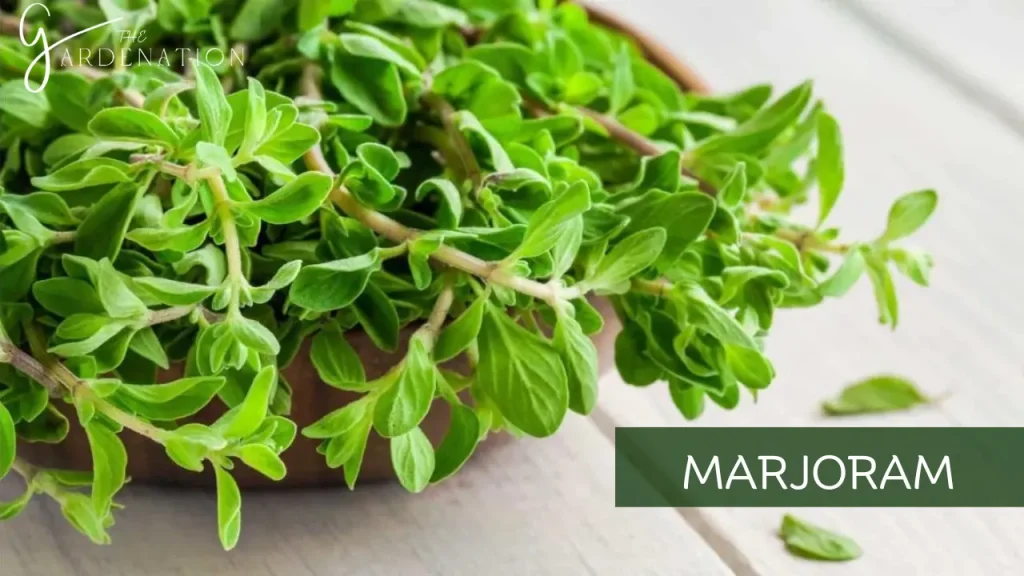
Marjoram is a close cousin to oregano with a sweeter, more delicate flavor. Its soft green leaves have a notably smooth tender texture. Subtly citrusy and woodsy tasting, marjoram shines in milder dishes like eggs, mushrooms, vinaigrettes, soup stocks and stews needing a milder herbal accent.
4. Italian Oregano
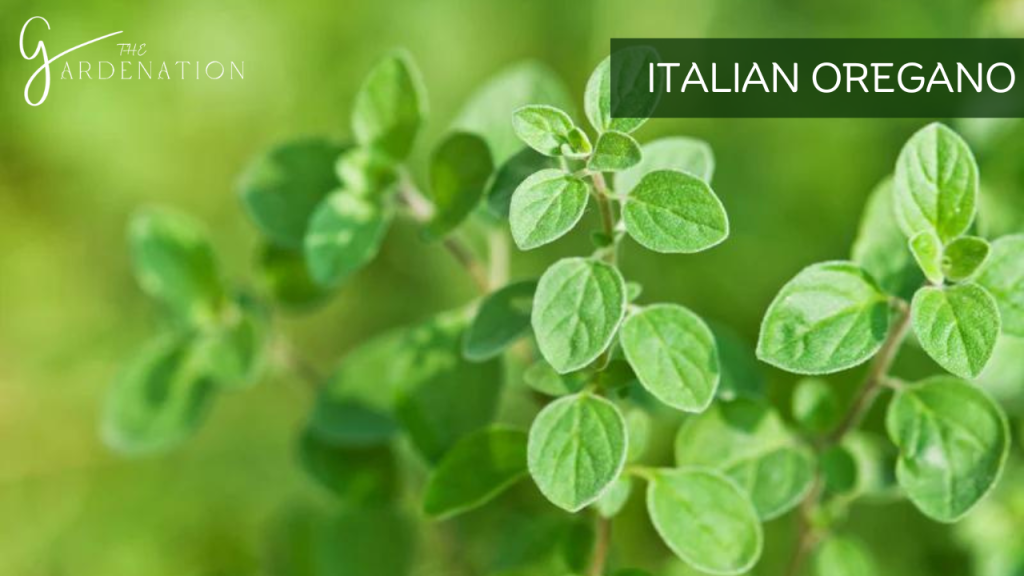
This oregano variety offers a slightly more pronounced peppery punch perfect for hearty Italian cooking. Its pleasantly pungent flavor energizes rich sauces, soups, tomato dishes, and meat rubs. An essential ingredient in Tuscan cuisine!
5. Golden Oregano
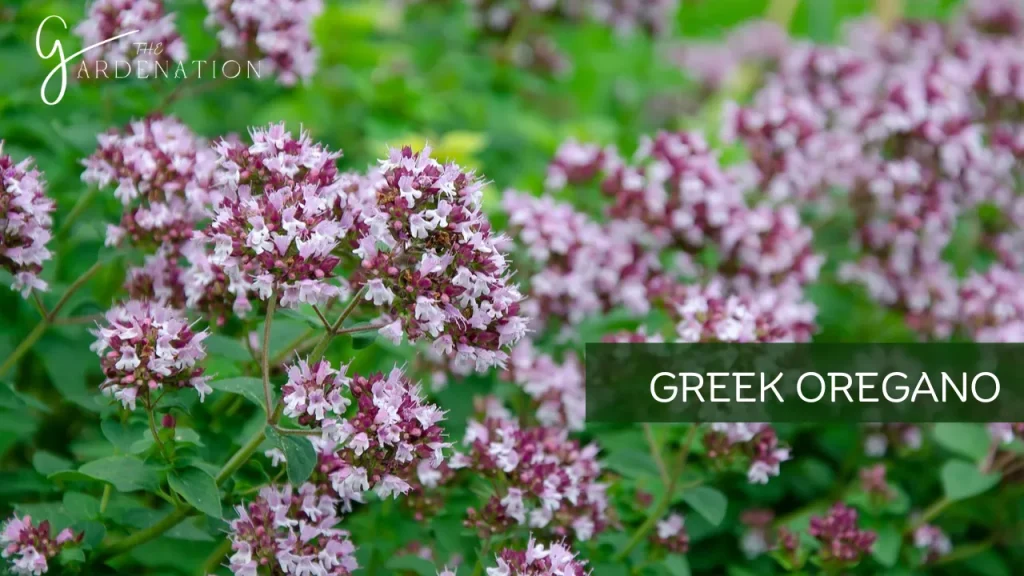
The golden oregano variety dazzles with bright golden leaves yet delivers a mellower, less assertive flavor. It makes a visually striking garnish. Also checkout Companion Planting For Leeks for more information.
The golden tinge also hints at a faint lemon essence. Use it to gently accent more delicately flavored dishes. Its beauty and taste deserve a prime spot in herb gardens.
6. Hot and Spicy Oregano
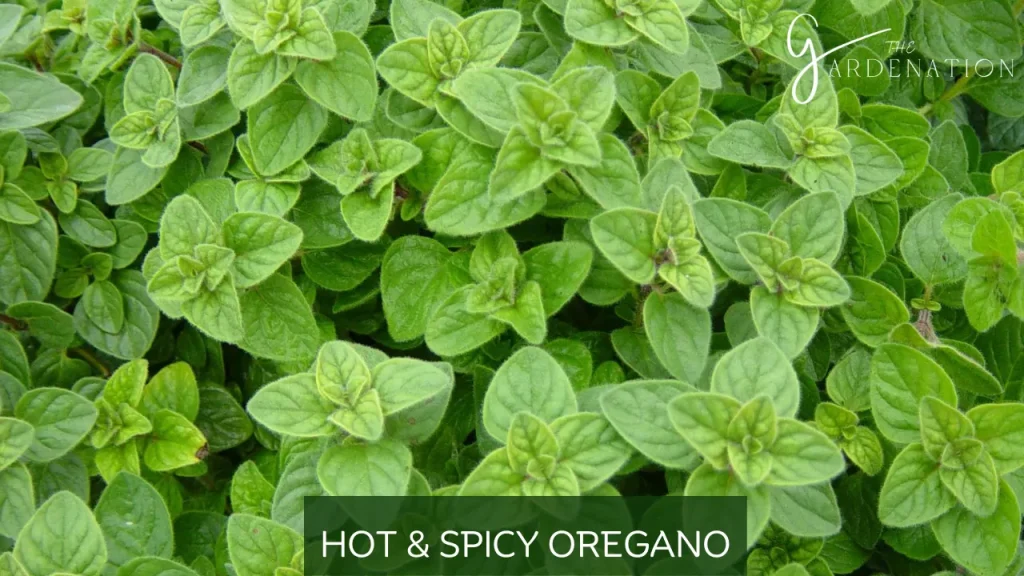
As its name proclaims, the hot and spicy oregano brings the heat! This variety features a bold peppery zing with intensely herbal, grassy undertones. Its spicy flavor and lingering warmth livens up any dish it touches. Use it sparingly as a zippy topping on pizzas, pastas, meats, vegetable sides, eggs and more.
Oregano Imposters
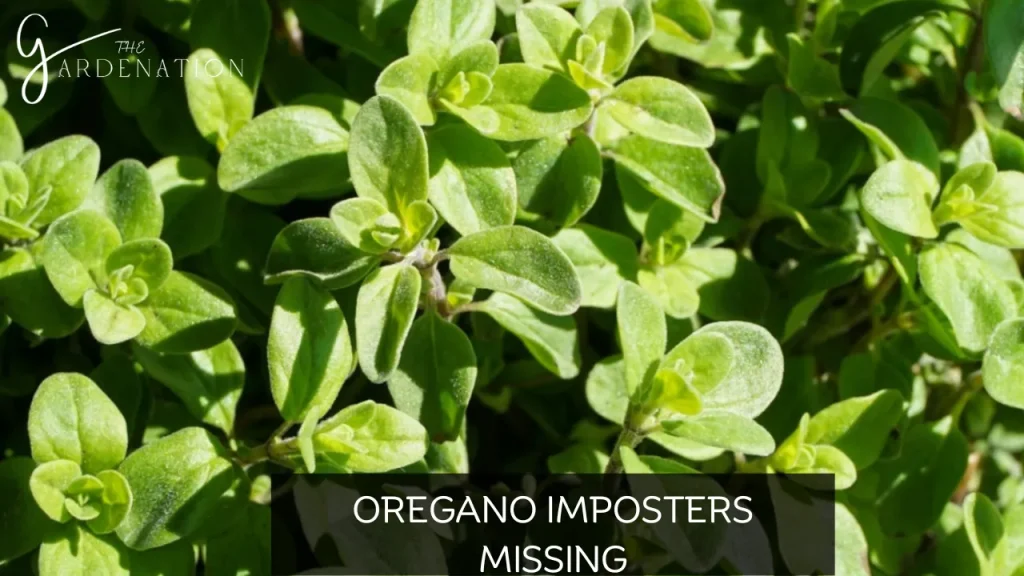
There may be some imposters in your search for oregano plants. Only by name are these herbs oregano. They are unrelated to the oregano varieties mentioned above and do not fall under the Origanum genus. They often have somewhat similar growing requirements, though.
1. Syrian Oregano
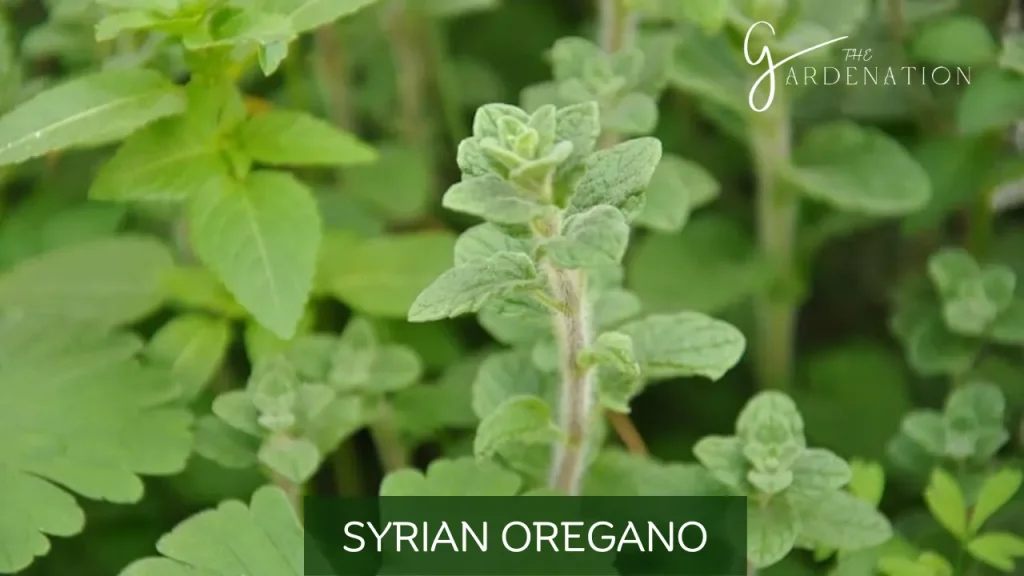
Despite its name suggesting origins in the Middle Eastern nation of Syria, Syrian oregano actually hails from Turkey and western Asia. This variety is known for an exceptionally robust pungency and unique lemony nuance.
Its intense zesty-ness shines when paired with meat, vegetable and egg dishes wanting a bright herbal flavor spike. Syrian oregano oil even shows promising antimicrobial properties in lab research.
2. Mexican Oregano
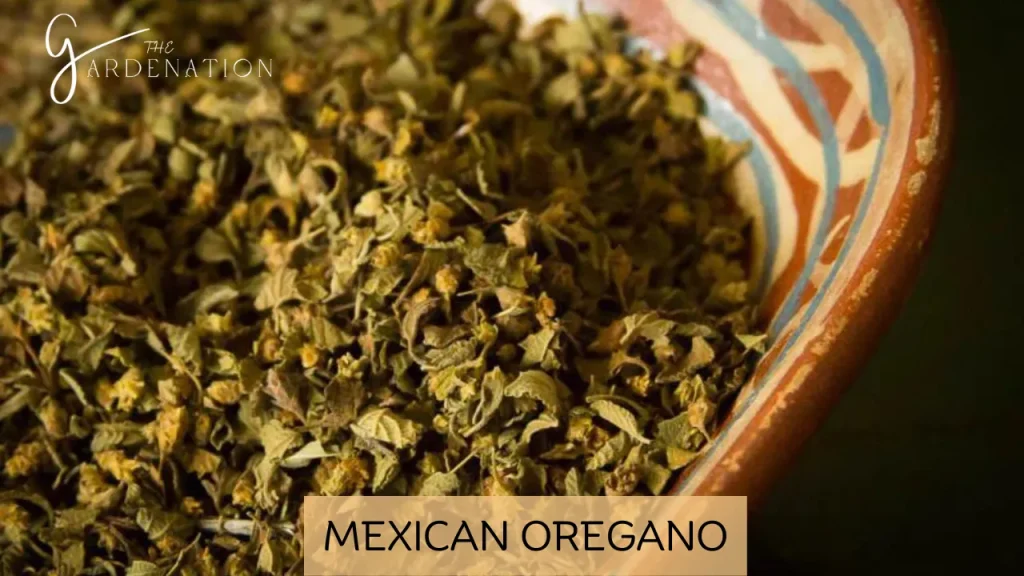
Though referenced similarly to Mediterranean oregano, Mexican oregano comes from an entirely different botanical family.
This aromatic shrubby plant with pretty pink flowers features smaller, gray-green leaves with a notably smooth texture.
Flavorwise Mexican oregano delivers a very potent punch of citrus, tar and subtle eucalyptus-mint hints. It works well in spicy Mexican and Latin cuisine.
3. Mexican Bush Oregano
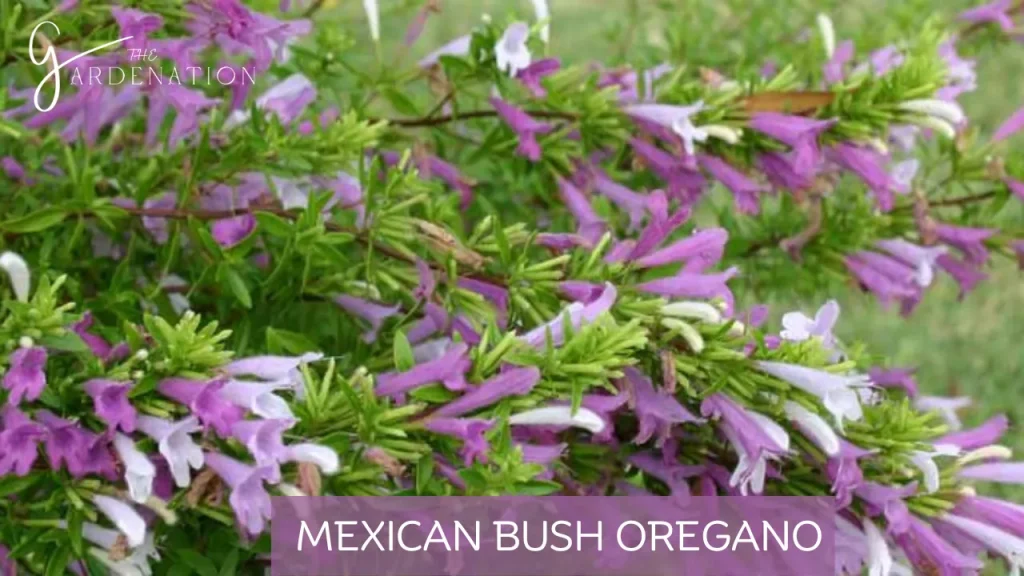
Despite a name suggesting it’s oregano, Mexican bush oregano is actually a member of the verbena family and not an oregano at all.
This compact bushy plant boasts tiny dark green leaves with a refreshingly intense lime scent released when crushed. The zesty citrusy flavor plays well as a meat marinade, sauce ingredient, or garnish in Mexican cooking applications.
4. Cuban Oregano
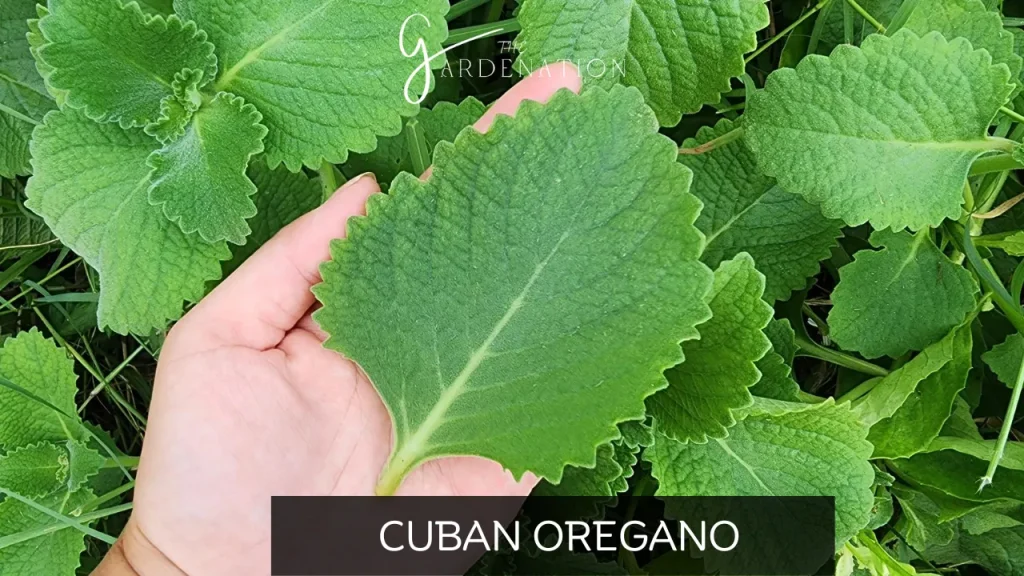
Also called Spanish thyme, Cuban oregano hails from tropical Central America. With fuzzy square stems and tiny pungent leaves, its camphor-minty aroma departs from Mediterranean oreganos.
Cuban oregano’s strong antifungal properties come from concentrated thymol. Its penetrating flavor is ideal for Caribbean cuisine, especially beans, pork and root vegetables, bringing a uniquely funky herbal essence.
Oregano Growing Stages
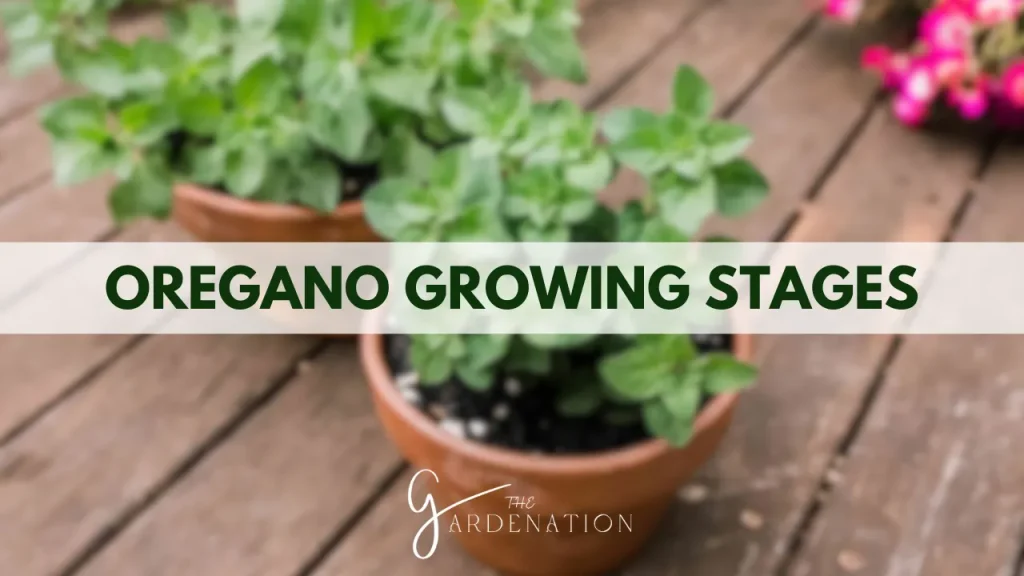
Here are the key growing stages of oregano:
1. Seedling Stage
- Oregano starts from tiny seeds that I sow indoors or in a greenhouse 6-8 weeks before the last expected spring frost
- Seeds germinate in 7-14 days when kept warm, 70-80°F
- The first seedlings emerge with their small cotyledon leaves
- Seedlings grow slowly at first, needing ample light and moisture
2. Leaf Growth & Establishment
- After 4-6 weeks, seedlings have developed 4-6 true oregano leaves
- Well-established roots help seedlings uptake nutrients to fuel leaf expansion
- Once outdoors, young oregano receives 6+ hours of sun enhancing foliage growth
- Leaves release aroma when I lightly rub them indicating establishment
3. Flower Bud Formation
- At 8-10 weeks old, ovarian plants transition from strictly leafy expansion to forming flower buds
- Buds emerge at the tips of upright stems as plants enter reproductive stage
- Transition indicates rising essential oil concentrations within the leaves
- Flowers generally emerge white to pale pink
4. Flowering & Seed Production
- Buds swell and open into delicate white or pink oregano flowers with four petals
- Bees facilitate cross-pollination allowing the flowers to develop seeds over 2 months
- Seeds form in green seed pods maturing to a dark brown papery texture when dried
- Each flower produces just 4 seeds which then drop to the ground or disperse
Following pollination and seed dispersal, oregano plants die back at first frost but readily return the next spring. The perennial roots overwinter and sprout vigorously again completing their repeating annual growth cycle.
Frequently Asked Questions
What are the best vegetable companions for oregano?
Tomatoes, peppers and eggplants as fellow heat lovers benefit from oregano’s pest deterring abilities and reportedly gain enhanced flavor when grown together. Beans, peas, brassicas like cabbage and broccoli also make great match-ups in an oregano veggie garden.
Does oregano help strawberries produce better?
Yes, I plant oregano around the edges of strawberry patches to boost yields. Oregano attracts more pollinators which fertilizes the delicate strawberry blooms resulting in larger, bountiful fruit production overall.
What herbs combine well with oregano?
Many herbs thrive alongside oregano including Mediterranean natives like rosemary, thyme and sage. Even moisture loving parsley and basil grow nicely at the shadier, moister end of a planter box while the oregano fills in the sunnier sections. Just avoid mint which will take over.
Is it better to start oregano from seed or transplants?
You can certainly start oregano from seed indoors in late winter, but this adds extra time before plants grow large enough to transplant outside after the final frost. Most gardeners have better success introducing pre-grown nursery transplants into their gardens which establish quickly. Choose robust starter plants showing no signs of flowering yet.
Conclusion
This overview of premier oregano companion plants – from tomatoes and bees to rosemary and thyme – hopefully inspires readers to explore vibrant complementary combinations through thoughtful garden design.
I take advantage of oregano’s pest deterring powers and pollinator appeal by pairing with fruits and vegetables that benefit from these symbiotic supports. I avoid invasively competitive plants like mint and squash which compromise compatible matches.
With helpful growing insights, may your oregano planting adventures cultivate both successful harvests showcasing richer flavors as well as beauty for all to enjoy!


One Comment